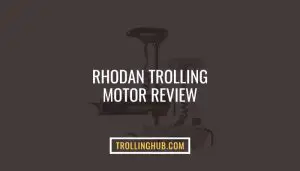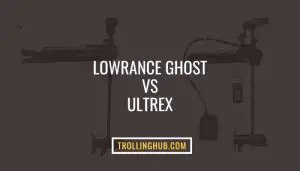Looking to add some excitement to your fishing routine? Trolling for speckled trout is the perfect way to do it! These sleek and elusive fish are highly sought after by anglers for their delicious taste and fighting spirit.
Not only is trolling for speckled trout an exciting way to challenge your skills and endurance, but it also allows you to explore new bodies of water and discover what lies beneath the surface.
Whether you’re a seasoned pro or just starting out, the thrill of the chase and the reward of a successful catch make trolling for speckled trout an unforgettable adventure. So grab your rod, bait your hook and let’s hit the water!
Trolling For Speckled Trout
Regardless of fishing in freshwater or saltwater, trolling presents a valuable opportunity to hone in on speckled trout and boost your odds of reeling in a big catch.
Here are some of the best trolling techniques to try:
1. Slow Trolling
Slow trolling involves trolling your bait or lure at a slow speed, allowing it to stay in the strike zone for a long time. This technique works best in areas with a strong current or when fishing in deep water, as it allows the bait to remain in the path of the fish for an extended period of time.
2. Speed Trolling
Speed trolling is the opposite of slow trolling, and involves moving the bait or lure at a much faster pace. This technique is best used in shallower waters or when the fish are actively feeding. Troll faster to cover more water, increasing chances of finding speckled trout.
3. Downrigger Trolling
It’s a popular technique for catching speckled trout in deep water. A downrigger is a device that allows you to lower your bait or lure to a specific depth, and keep it there while trolling. This allows you to target the depth where the fish are holding, and increases your chances of getting a bite.
4. Planer Board Trolling
This is another popular technique for catching speckled trout. A planer board helps position the line away from the boat, allowing you to target more fish while trolling. By using a planer board, you can fish multiple lines at once, increasing your chances of catching speckled trout.
The planer board helps to spread out your lines, making it easier to cover more water and increase your chances of finding a school of fish.
How Fast Do You Troll For Speckled Trout?
It varies depending on the trolling technique you are using and the conditions of the water. Generally, slow trolling is done at a speed of 1-2 mph, while speed trolling can be done at a speed of 3-5 mph. However, it’s best to experiment with different speeds and adjust based on the behavior of the fish. Always keep an eye on your line and be ready to make adjustments on the go.
Best Time To Catch Speckled Trout
Trolling for Speckled Trout in Winter
Speckled trout are known to be more active in warmer months, but with the right equipment and techniques, it is still possible to catch them in winter. During the winter months, it’s best to troll in deeper waters where the temperature remains relatively stable.
It is also important to keep your bait near the bottom of the water column, where the fish are more likely to be. With patience and persistence, you can still have a successful winter trolling trip for speckled trout.
Time of Day is Best for Speckled Trout
The best time of day to catch speckled trout varies depending on the conditions, but early morning and late afternoon are typically the most productive. During these times, the water is cooler and the fish are more active.
As the day progresses, the water warms up and the fish become less active, making it more difficult to catch them. Therefore, if you’re looking for the best time to troll for speckled trout, early morning and late afternoon are the best bets.
Best Month to Catch Speckled Trout
The best month to catch speckled trout varies depending on the location, but in general, spring and summer are the most productive seasons. As the water warms up, the fish become more active and are easier to catch.
Additionally, the warmer water temperatures make it easier to attract baitfish, which in turn attracts speckled trout. Therefore, if you want to increase your chances of catching speckled trout, target them in the spring and summer month
Best Rig For Speckled Trout
When it comes to trolling for speckled trout, choosing the right rig can make all the difference in successful catch. Here are 5 of the best rig methods for targeting these elusive fish.
1. Carolina Rig


The Carolina Rig is a simple yet effective rig for trolling for speckled trout. It consists of a weight, leader, hook, and you can often bait it with soft plastic bait or a jig. This rig is great for covering a large area of water and mimicking the movement of a wounded baitfish.
2. Split Shot Rig


The Split Shot Rig is another popular rig for speckled trout. This rig involves placing a small split shot weight above a hook, which allows the bait to sink slowly and stay in the strike zone longer.
This rig is best used in slower currents and works well when paired with natural baits such as fat minnows or eggs.
3. Spoon Rig


The Spoon Rig uses a metal spoon to mimic the movement and flash of a baitfish. This rig is especially effective when the water is murky or the speckled trout is finicky. Spoons come in various sizes and colors, allowing you to choose the one which matches the baitfish in your area.
4. Topwater Rig


The Topwater Rig is a surface trolling rig that uses a topwater plug, such as a popper or a spiral tail, to mimic the movement of a fleeing baitfish. This rig is best used in calm water and during low light conditions when speckled trout are feeding near the surface.
5. Jig Rig


The Jig Rig is a bottom-bouncing rig that uses a jig, often paired with a soft plastic bait, to mimic the movement of a crayfish or other small creature. The rig is most effective in areas with heavy structures like rocks or jetties and can be fished effectively at different depths. Experiment with different colors and weights of jigs to find the one that works best for you.
Best Lures For Trout
Lures play a crucial role in catching speckled trout while trolling. The right lure can attract the attention of these fish and entice them to bite. Here are 5 of the best lures for targeting speckled trout.
1. Soft Plastic Baits


Soft plastic baits, such as paddle tail swimbaits and curly tail grubs, imitate the movement and appearance of small baitfish. These lures can be rigged on a jighead and retrieved slowly to mimic wounded or fleeing prey, making them a popular choice among anglers.
2. Jigs


Jigs are versatile lures that you can rig with different trailers, including soft plastic baits, tails, or even natural baits like minnows. The weight of jighead allows it to sink quickly, while the trailer can provide action and movement in the water.
3. Crankbaits


Crankbaits, or plugs, imitate the appearance and swimming motion of small fish or insects, making them ideal for rapidly covering vast areas of water. They can also be fished at varying depths to target speckled trout in various water columns.
4. Spoons


Spoons, such as the Kastmaster and Hopkins, are classic trolling lures that mimic the appearance of small fish. These lures are made of metal and have a concave shape that creates flashing and vibrating action in the water.
5. Topwaters


Design topwater lures, like poppers and walk-the-dog lures, to imitate the look and movement of topwater prey, like insects. Quickly retrieve these lures to create a disturbance on the surface, triggering a predatory response from speckled trout.
What Size Lure For Speckled Trout?
The lure size for speckled trout varies based on various factors such as water depth, temperature, and speed of trolling. Generally, smaller lures in the 1/4 to 1/2 oz range work well for shallow waters.
And larger lures from 3/4 to 1 oz are suitable for deeper waters. Experimenting with different sizes and styles of lures can improve your chances of success. Match lure size to baitfish in the area you’re fishing.
FAQs
Depending on the time of year, type of water, and types of trout you’re targeting may be found in deeper or shallower water. In mid-spring, a depth of 20-30 inches and in late spring, at a depth of 30-45 inches is suitable for trolling for speckled trout.
Apart from these, pay attention to the conditions and habits of the specific type of trout to determine the best trolling depth.
Speckled trout are known to be light biters and require a light touch, therefore a 4-6 lb test line is perfect for targeting these elusive fish. This light line will allow for a natural presentation of the bait, while still being strong enough to handle the fish.
Anything above 6 lb test line may be too heavy, causing the fish to shy away. Make sure to choose a line that’s perfect for the size of the fish and your fishing conditions.
Speckled trout are opportunistic feeders and will eat a wide range of baits, but live bait such as minnows, shrimp, and worms are their favorites. These natural baits mimic the speckled trout’s natural prey, making them irresistible to the fish.
Lures such as soft plastic and topwater plugs can also be effective, especially when the fish are in a feeding frenzy. Experiment with different baits to see what works best in your specific fishing spot.
When it comes to speckled trout fishing, the best reel size is a spinning reel with a 1000-3000 series. These reels are lightweight, durable, and have a good drag system, making them perfect for casting and retrieving.
Additionally, they have a good line capacity to handle the fast and powerful run by the fish. These reel sizes are perfect for light tackle, finesse fishing and suitable for anglers of all skill levels when targeting speckled trout.
A jig head weight of 1/16 to 1/8 ounce is considered the best option for targeting speckled trout. These lightweight jig heads are perfect for casting and retrieving and are able to mimic the trout’s natural prey. The size of the jig head will depend on the size of the bait and the current conditions.
Experiment with different jig head sizes to find the one that works best for your specific fishing spot. The perfect jig head will make all the difference in catching those elusive speckled trout.
Windy conditions can make it challenging to fish for speckled trout, but they do not necessarily mean the fish will not bite. Some anglers find that windy conditions can actually make the fish more active, as it stirs up the water and makes it easier for the fish to find food.
However, it’s important to note that the wind can make casting and retrieval difficult, so it’s best to fish in protected areas or use heavier lures to counteract the wind.
Speckled trout are most active during the early morning and late evening hours, but they can still bite during the middle of the day. The key is to find the right spot and use the right bait.
Look for areas with plenty of covers such as logs, rocks, and vegetation, and areas with little to no current. Remember to always pay attention to the water conditions and the activity level of the fish and adjust your fishing strategy accordingly.
Final Thoughts
The excitement of trolling for speckled trout is truly unparalleled. Whether you’re a seasoned pro or a beginner, this method of fishing offers something for everyone.
With a bit of patience, skill, and luck, you too can join the ranks of successful anglers and experience the thrill of trolling for speckled trout. And who knows? You might just discover your new favorite fishing spot along the way.
So don’t wait any longer to set out on your own trolling adventure. Grab the gear, head to the water, and get ready for an unforgettable experience that you’ll be eager to repeat. Until next time, happy fishing!



